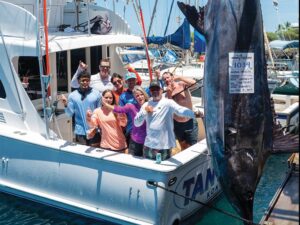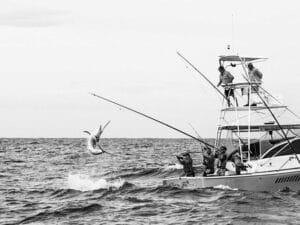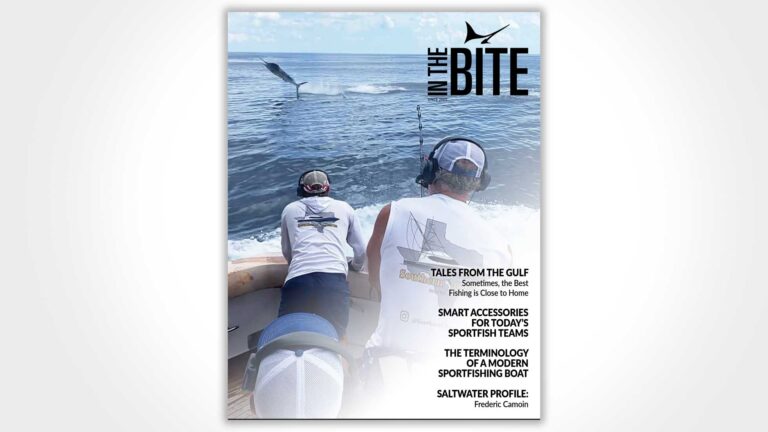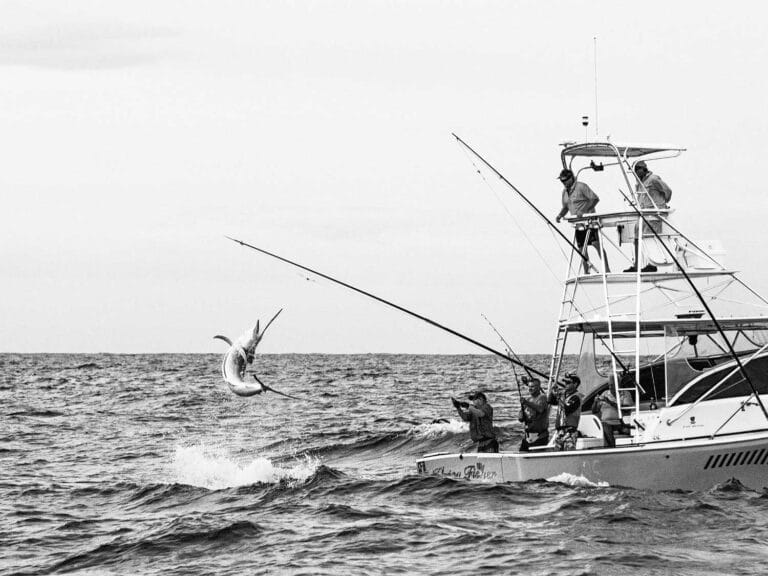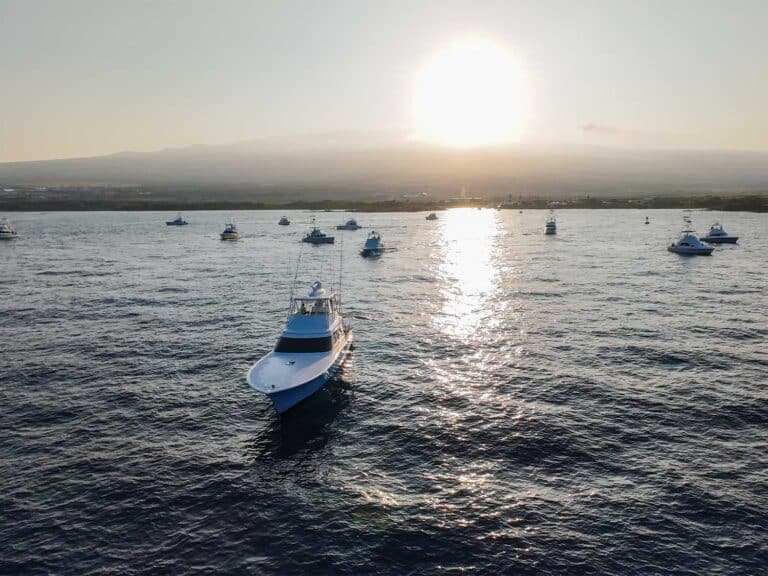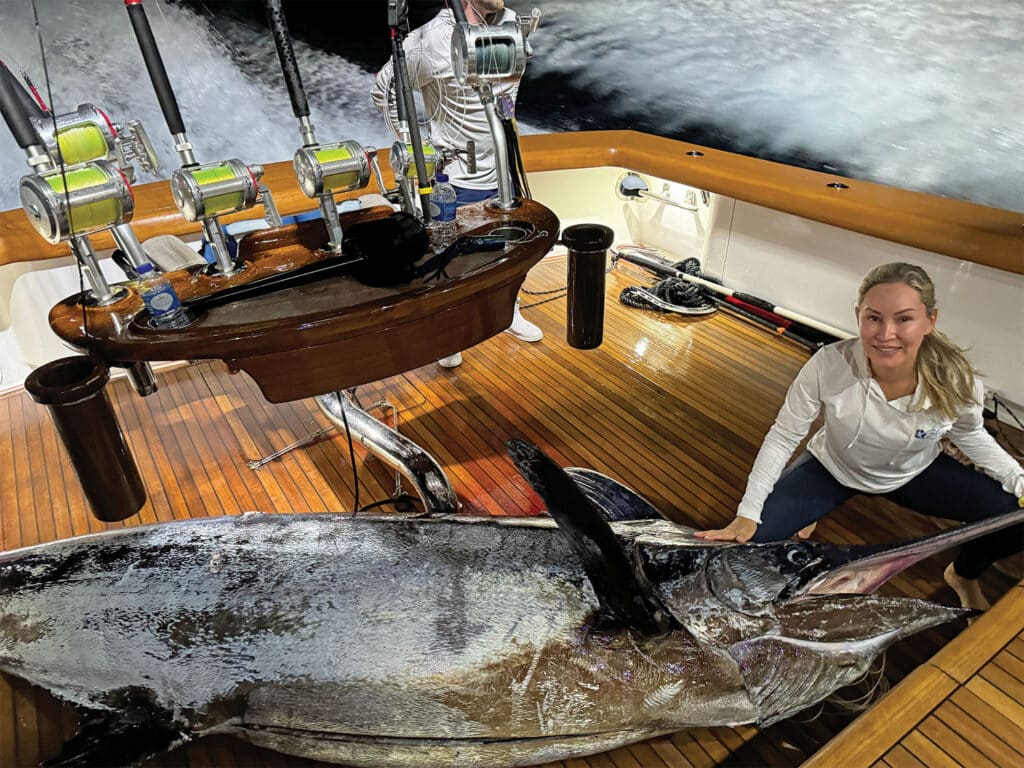
Subscribe to Marlin magazine and get a year of highly collectible, keepsake editions – plus access to the digital edition and archives. Sign up for the free Marlin email newsletter.
A few years ago, my husband, Brooks Smith, and I made the decision to venture across the Atlantic in search of giant blue marlin, with a new goal of pursuing world records. Brooks suggested I set my sights on the women’s 50-pound-test record, which stood at 802 pounds and was captured back in 1986 in the Canary Islands. Of course, we were also prepared for the rare opportunity for an All-Tackle record, but Brooks felt we had a real shot at achieving a record on 50-pound test.
To start the journey, we shipped our 77-foot Willis, Uno Mas, to the Canary Islands. From there, she would head to Cape Verde, Madeira, and finally to the Azores to finish the season. Our first trips to the Azores in August and early September were slow, with few encounters. Our final attempt would be a late September trip to the island of Faial. Fishing out of the port of Horta, we hoped for better luck as the season wound down.
That trip didn’t start promisingly. We raised only one fish that wouldn’t tease or switch, and after six straight days without another sighting, frustration set in. With bad weather approaching, we decided to cut our trip short and depart on Friday, September 27. Thursday, September 26, would be our final day on the water.
That morning, Brooks took the helm as we headed to the Azores Bank. I told him flat out I wasn’t coming back next year—the fishing had been too slow. He simply said, “Be patient. We’re here for one special fish.” After six days with just one sighting and no bites, my hope was wearing thin.
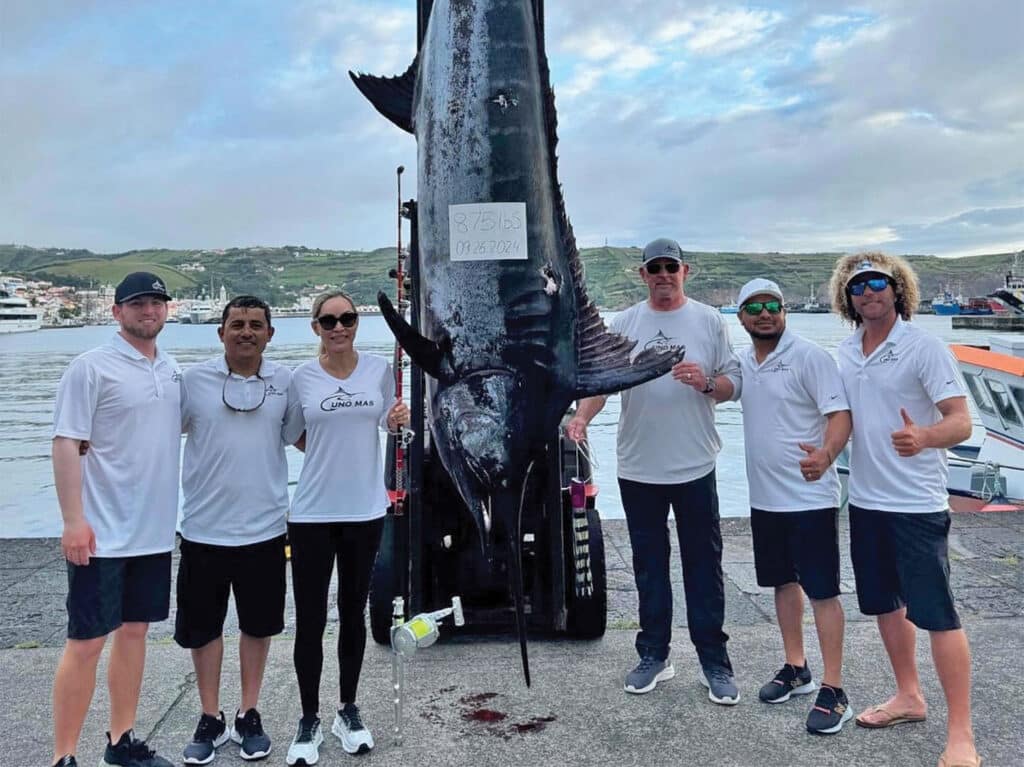
The morning dragged on without any signs of life. At around 3:30 p.m., Brooks noted that a nearby charter boat had just gotten a bite. Then another boat reported a hookup. At 4 p.m., we finally got our first bite of the week—a nice 500-pounder came up on the left short and switched off perfectly to my pitch. I was thrilled just to have the shot, even if it wasn’t the “right” one. Brooks reminded me again to stay patient: “There are some nice fish showing up. We’ll fish until 6:30 p.m.”
At 5:30 p.m., word came over the radio that another boat had just released a 700-pounder. My hope reignited. Then, at around 6 p.m., Brooks shouted, “Sonar mark!” Within seconds, there was an explosion on the right bridge teaser. Danny, our veteran wireman, called out, “Big fish!” as it faded to the right short. Brooks calmly directed the crew, and our mate Jeremy teased the fish perfectly toward the boat. I pitched the 50-pound outfit with a big mackerel, and the marlin crushed it.
As my line came tight, I dared to believe this could be the one. We got the fish to leader in just 11 minutes, and when it jumped for the first time, Brooks didn’t hesitate: “That’s the right one,” he called. “No need for the measuring tape.”
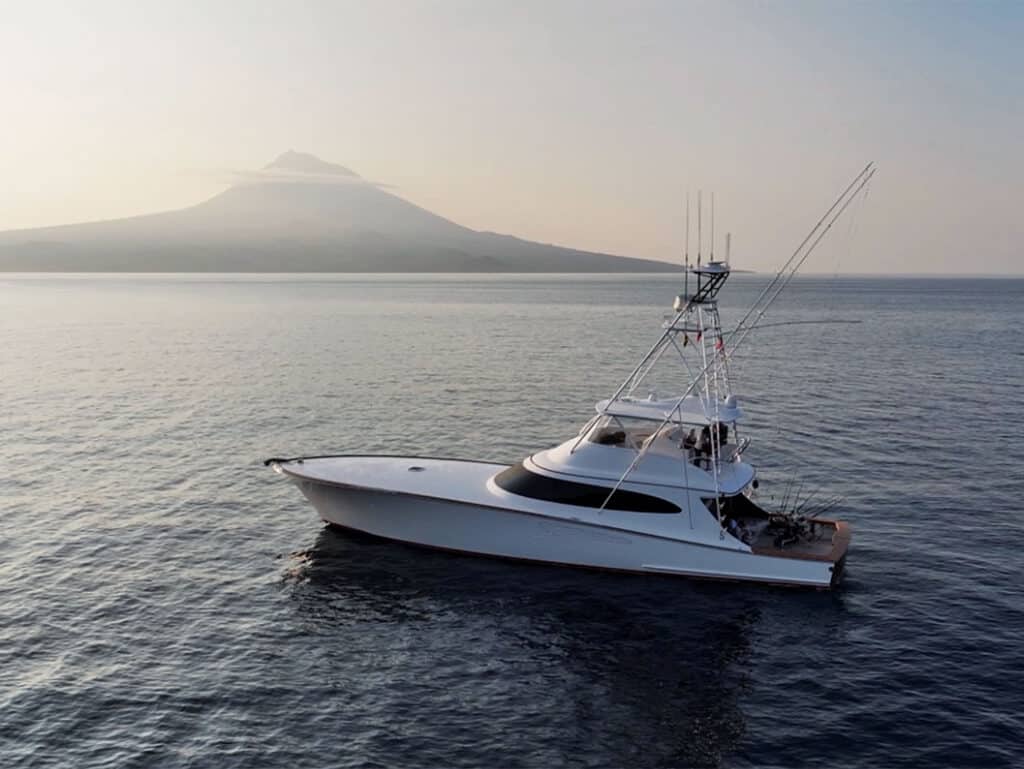
The real work began then. Over the next two hours, we had the fish on the wire five times. Finally, in complete darkness, we set the gaff and began boating her. Adrenaline pumping, the crew took initial measurements. She was fat all the way to her tail, and we guessed she might push 900 pounds.
By the time we pulled into the commercial dock at Horta at around 10 p.m., word had spread. Hundreds of people gathered along the waterfront, waiting to see the fish. I stood by as the crew carefully prepared for the weigh-in, meticulously following IGFA guidelines. The short length measured 136 inches, the girth measured 70 inches, and the overall length was 163 inches.
As the forklift raised her and the scale settled, I could hardly breathe. Finally, the number appeared: 875 pounds. My dream had come true—a new women’s 50-pound-test world-record blue marlin.
